4. Songs of the Poets.
Why should some poets seldom get set to music after their death, while others are perennially popular?
What is it about a text, in rhymed or free verse or even in prose, that attracts a composer? We shall look
at five writers who have inspired memorable settings, and ten composers who have tackled them—from Europe
in the first half, and America in the second.
I strongly advise you to read the Texts handout before class.
Although I shall put each of the nine poems up on the screen, you would get more out of them if you had read
them in advance. This especially applies to the last page of the handout, James Agee's Knoxville, Summer
of 1915, since the subtitles on the video are smaller than I would have made them myself. As usual, the
script, videos, and images will be posted immediately after class.
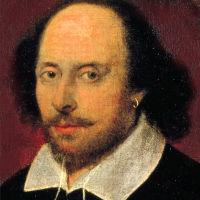 |
William Shakespeare, 1564–1616. English poet and playwright.
With almost 40 plays, 154 sonnets, and many longer poems, Shakespeare dominates English literature of his time, and world literature for ever after. To attempt a thumbnail biography would be both unnecessary and impossible.
|
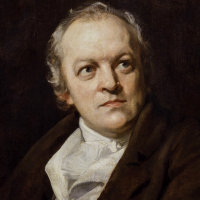 |
William Blake, 1757–1827. English printmaker, painter, and poet.
His work spans the late classical and early romantic periods, but his style in each of his many media is sui generis and infused with a strongly mystical bent.
|
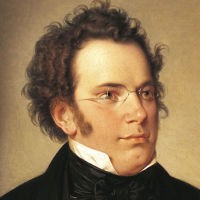 |
Franz Schubert, 1787–1828. Austrian composer.
Although he died before his 32nd birthday, Schubert was extremely prolific as a composer, writing symphonies, masses, chamber music, piano sonatas, and over 600 songs, both individually and in cycles. Though little known in his lifetime, his work was rediscovered and championed by Mendelssohn, Liszt, and Brahms, making him in effect the source of the German Romantic movement.
|
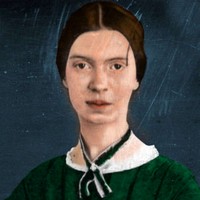 |
Emily Dickinson, 1830–86. American poet.
As she lived in Amherst for her entire life, latterly refusing to leave her family home, Dickinson's prolific output was virtually unpublished in her lifetime, and was subject to editing after her death to bring it more in tune with contemporary aesthetics. But it is precisely the unconventional nature of her verse, with its short lines and slant rhymes, that has led to her recognition as one of the leading Americal poets of her time.
|
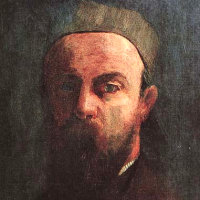 |
Odilon Redon, 1840–1916. French painter.
Redon was a leading French Symbolist, noted for the brilliant color of his later works, including several on the theme of Orpheus.
|
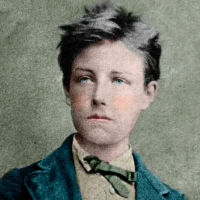 |
Arthur Rimbaud, 1854–91. French poet.
Rimbaud's works in verse, prose-poetry (Illuminations), and prose (the proto-Surrealist Season in Hell) were all produced before he gave up writing at age 20 and left France for Africa. His highly-colored often violent language reflects his turbulent, transgressive personality (as did his two-year passionate relationship with Paul Verlaine), but made him a significant contributor to Symbolism.
|
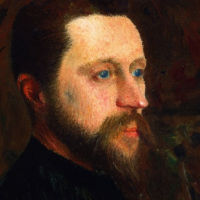 |
Georges Seurat, 1859–91. French painter.
Seurat exhibited his masterpiece, Sunday Afternoon on the Grande Jatte, at the last Impressionst exhibition (1886), but he was never really one of their group, sketching out of doors, but preferring to work up his carefully balanced compositions in the studio. His formalization of the Impressionist technique of using contrasting colors in small brushstrokes led to the style known as pointillism or Neo-Impressionism, of which he was the founder.
|
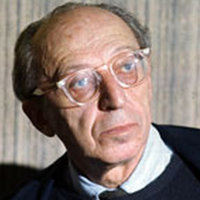 |
Aaron Copland, 1900–1990. American composer.
Trained in Paris, Copland began writing in the style of the European avant garde, but with ballet commissions in the 1930's and 1940's such as Billy the Kid, Rodeo, and Appalachian Spring, he developed the open folk-inflected style that has become, for many people, the sound of American music.
|
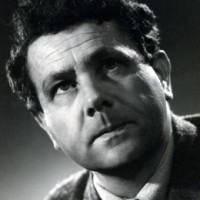 |
Gerald Finzi, 1901–56. English composer.
Although he composed in other genres, Finzi is best known for his vocal works, such as the cantata Dies Natalis (1939), his Shakespeare cycle Let Us Garlands Bring (1942), and many settings of Thomas Hardy.
|
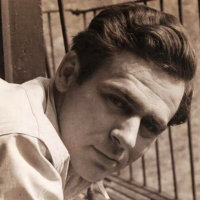 |
James Agee, 1909–55. American writer.
Agee's autobiographical novel about growing up in Knoxville, A Death in the Family (1957), won a posthumous Pulitzer Prize. He was also co-author with photographer Walker Evans of the Depression documentary book Let Us Now Praise Famous Men (1943), an influential film critic for Time Magazine, and screenwriter of The African Queen.
|
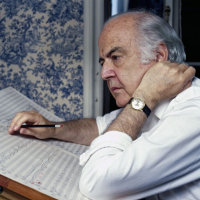 |
Samuel Barber, 1910–81. American composer.
He wrote the score for Martha Graham's Cave of the Heart, on the Medea legend. He has written in most other genres, including opera (Antony and Cleopatra and Vanessa), and is probably most celebrated for his Adagio for Strings (1938).
|
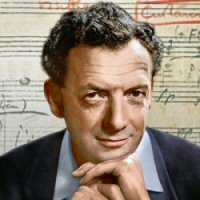 |
Benjamin Britten, 1913–76. English composer.
Arguably the leading opera composer of the mid-20th century, Britten's major operas have included Peter Grimes (1945), Billy Budd (1951), Gloriana (1953), A Midsummer Night's Dream (1960), and Death in Venice (1973), plus many stage works for smaller forces. He was equally active as a composer of instrumental music and text settings, and latterly as a conductor and accompanist.
|
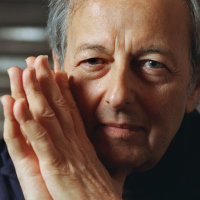 |
André Previn, 1929–2019. German-American composer and conductor.
A multi-talented musician, Previn escaped Germany with his family in 1938 and traveled to California via Paris. Even as a teenager, he started composing music for MGM films, and eventually won four Oscars. Meanwhile, he was establishing himself as a jazz pianist. His career as a classical conductor played out in directorships in Houston, London, LA, Pittsburgh, and Oslo, with guest appearances all over the world. In later years, he put most of his energies into composition, writing the successful opera A Streetcar Named Desire (1998) and numerous other works.
|
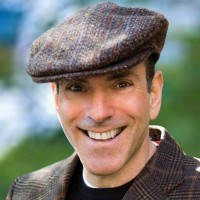 |
Ricky Ian Gordon, 1956– . American composer.
Gordon has written several stage works, both opera and musical theater, and numerous songs that have been performed by headline artists.
|
 |
Craig Hella Johnson, 1962– . American composer.
Born in Minnesota, Johnson has established himself as a leading composer and conductor of choral music. He directed the group Chanticleer before founding his own ensemble Conspirare in 1991. His recordings have been nominated for 8 Grammys. He adopted the middle name "Hella" in tribute to the Norwegian birthplace of his parents.
|
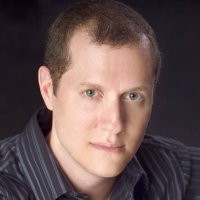 |
Mark Lanz Weiser, 1968– . American composer.
While still a student at the Peabody Conservatory, Weiser wrote the opera Where Angels Fear to Tread (2002) to an adaptation of the EM Forster novel by Roger Brunyate; this received its professional premiere by Opera San Jose in 2015. He has since gone on to write seven other operas and numerous orchestral and instrumental works. He teaches at the USC Thornton School of Music in Los Angeles.
|






















































